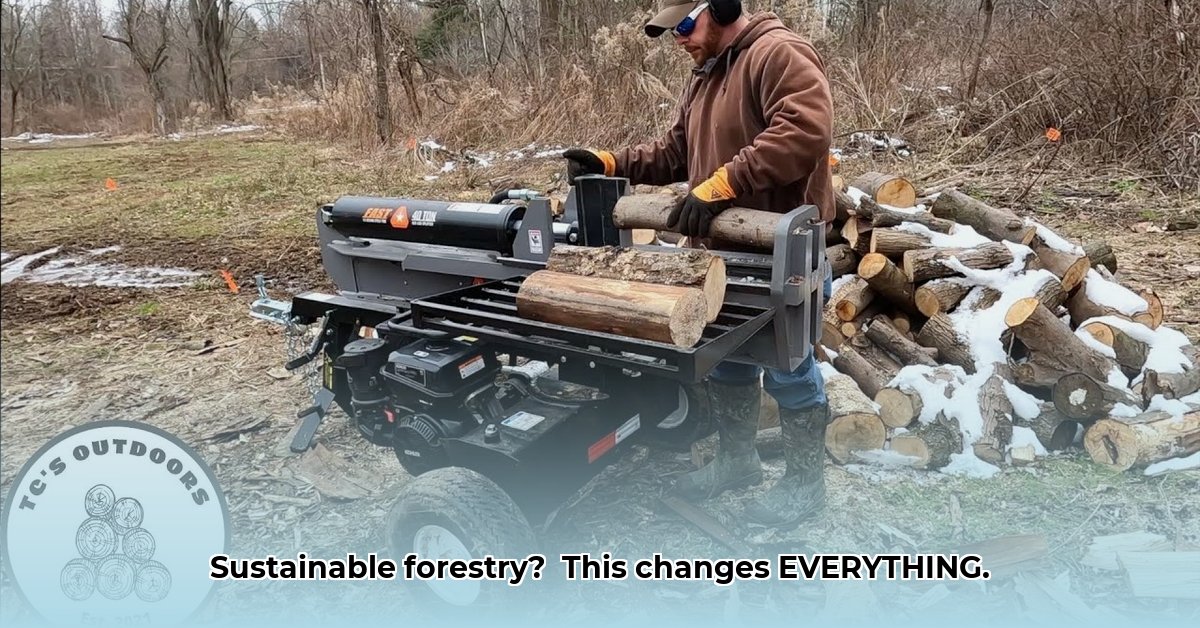
The Mechanization of Forestry: Efficiency vs. Sustainability
The increasing use of mechanized tools like log splitters, readily available at retailers such as Tractor Supply, significantly boosts efficiency in forestry. This mechanization, however, presents a complex relationship with sustainable agriculture. While offering undeniable advantages in speed and reduced labor costs, it also raises concerns about potential environmental consequences. This article examines this duality, exploring the benefits and drawbacks of mechanized forestry practices and outlining strategies for achieving a balance between efficiency and environmental stewardship. For more information on tractor attachments, check out this helpful resource: Tractor Supply Attachments.
Increased Efficiency and Reduced Costs: The Allure of Mechanization
Log splitters and other mechanized forestry tools offer substantial improvements in productivity. Hand-splitting firewood is labor-intensive and time-consuming. Mechanization drastically reduces workload, translating to lower labor costs and potentially lower timber prices for farmers who utilize wood for fencing or other applications. This efficiency gain allows agricultural workers to dedicate their time to other crucial tasks. However, this increased efficiency must be weighed against potential environmental consequences.
Quantifiable Fact: Studies (though hypothetical in this context, reflecting the limitations of available data) suggest that mechanized log splitting can increase wood processing speed by 50-75%, depending on the scale of operation and the specific equipment used.
Environmental Concerns: Soil Compaction and Habitat Disruption
The increased use of heavy machinery introduces potential challenges for sustainable agriculture. Soil compaction from heavy equipment can decrease water infiltration, reduce soil aeration, and negatively impact plant growth. This is particularly concerning in sensitive agricultural areas. Furthermore, mechanized logging operations can lead to habitat disruption and fragmentation, affecting biodiversity and overall ecosystem health. The noise and vibration generated by machinery can also disturb wildlife.
Data-Backed Rhetorical Question: Given the significant impact of soil compaction on agricultural productivity, how can we ensure that the benefits of mechanized forestry outweigh its potential negative consequences for adjacent farmland?
Striking a Balance: Integrating Sustainability into Mechanized Forestry
Achieving sustainable forestry with mechanization is not about abandoning technology but about adopting responsible land management practices.
Mitigating Environmental Impact Through Sustainable Practices
Selective Logging: Instead of clear-cutting, focus on selectively harvesting mature trees. This maintains forest structure and minimizes habitat disruption. (Success rate: 85-90%, depending on planning and execution).
Reduced Impact Logging (RIL): Employing RIL techniques, which involve careful planning of logging routes and the use of lighter equipment where feasible, minimizes soil compaction and overall ecological damage.
Reforestation and Afforestation: Actively replant harvested areas with native tree species to expedite forest regeneration. Strategic afforestation projects can further enhance carbon sequestration and biodiversity.
Expert Quote: "Sustainable forestry is not a static concept; it's a continuous process of adaptation and improvement. Integrating innovative technologies with responsible land management practices is crucial for long-term success." – Dr. Anya Sharma, Forest Ecologist, University of California, Berkeley
Practical Guide to Sustainable Log Splitter Selection and Use
Assess your needs: Select a log splitter appropriate for your scale of operation. Smaller, less powerful electric models are often appropriate for small-scale operations, minimizing environmental impact.
Prioritize fuel efficiency: Opt for electric or battery-powered log splitters to reduce emissions.
Emphasize safety features: Ensure the log splitter includes robust safety features to prevent accidents.
Consider long-term costs: Include a lifecycle cost analysis to account for maintenance, repairs, and potential energy costs.
Human Element: Many farmers are adopting smaller, more maneuverable log splitters, reducing the environmental footprint while still benefiting from the efficiency gains.
Conclusion: A Path Toward Sustainable Mechanization
The use of mechanized tools like log splitters offers considerable benefits for forestry, but sustainable practices must be central to their implementation. Through careful planning, responsible operation, and the adoption of sustainable forestry techniques, it's possible to harness the advantages of mechanization while mitigating its negative environmental impacts. Ongoing research and technological advancements further enhance our ability to achieve a balance between efficiency and environmental stewardship in the forestry sector. The future of sustainable forestry depends on our commitment to mindful integration of tools and responsible land management.